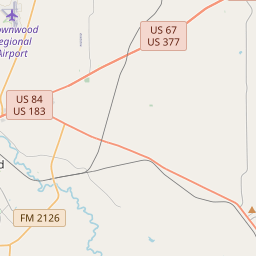Veda Wells Hodge
Historical marker location:






Alumna, trustee, benefactress of Howard Payne College. Born in Rising Star; daughter of a pioneer Baptist minister. Had teaching career before her marriage to J. Howard Hodge, a Midland theatre and oil magnate. President, Texas Federation of Women's Clubs, 1949-1951. Has held division chairmanships, General Federation of Women's Clubs, an international organization. Member of the Advisory Board, Japan International Christian University. Past member, Advisory Group, President's White House Committee for Traffic Safety. A leader in West Texas civic life. Outstanding Women of Texas Series, 1967
As one of the most visible programs of the Texas Historical Commission (THC), historical markers commemorate diverse topics in Texas history, including: the history and architecture of houses, commercial and public buildings, religious congregations, and military sites; events that changed the course of local and state history; and individuals who have made lasting contributions to the state, community organizations, and businesses.
The world's first rodeo was held in Pecos, Texas in 1883. The event included bronco riding, calf roping, and bull riding.
The county was officially established on August 27, 1856, and was named after Henry Stevenson Brown, a commander during the Texas Revolution. During the mid-19th century, the area experienced rapid growth and development. The arrival of the Texas and Pacific Railroad in 1885 significantly boosted the local economy, leading to a population increase and new opportunities for trade.
Throughout its history, Brown County has been primarily agricultural-based, with cotton being a major crop during the late 19th and early 20th centuries. The discovery of oil in the early 1900s also brought prosperity to the region. As the county developed, schools, churches, and other infrastructure were established, contributing to the growth and overall wellbeing of the community.
Brown County has faced its fair share of challenges as well. Like many other areas in Texas, it struggled during the Great Depression, but gradually recovered with the help of various New Deal programs. In recent years, the county has focused on diversifying its economy, with industries such as healthcare, education, and manufacturing becoming more prominent.
Today, Brown County maintains its historical charm and offers a mix of rural landscapes and urban conveniences. It continues to preserve its heritage through various cultural events and historical sites, including the Brown County Museum of History. As the county moves forward, it strives to balance growth with its strong sense of community and appreciation for its past.
Brown County Timeline
This timeline provides a condensed summary of the historical journey of Brown County, Texas.
- 1800s: Brown County was initially inhabited by Comanche and Kiowa Native American tribes.
- 1849: The County was originally established by the Texas Legislature and named after Henry Stevenson Brown, a Republic of Texas militia major killed at the Battle of Velasco during the Texas Revolution.
- 1856: The first permanent settlement was established in the county, known as Brownwood, named after Henry Stevenson Brown.
- 1867: The county was officially organized, and Brownwood became the county seat.
- 1885: The arrival of the Texas Central Railroad in Brownwood facilitated growth and development in the county.
- 1903: Howard Payne College, now known as Howard Payne University, was founded in Brownwood.
- Early 1900s: Cotton and livestock farming were the primary economic activities in Brown County.
- 1930s: The Great Depression deeply impacted the county's economy, leading to a decline in population and prosperity.
- 1950s: The discovery of oil and gas reserves brought an economic boom to Brown County.
- 1970: Lake Brownwood was constructed as a recreational reservoir in the county.
- 1997: The expansion of Howard Payne University included the renovation and construction of various campus facilities.